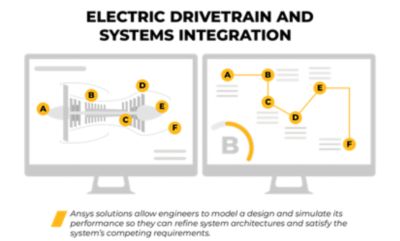-
-
Accédez au logiciel étudiant gratuit
Ansys donne les moyens à la prochaine génération d'ingénieurs
Les étudiants ont accès gratuitement à un logiciel de simulation de classe mondiale.
-
Connectez-vous avec Ansys maintenant !
Concevez votre avenir
Connectez-vous à Ansys pour découvrir comment la simulation peut alimenter votre prochaine percée.
Pays et régions
Espace client
Support
Communautés partenaires
Contacter le service commercial
Pour les États-Unis et le Canada
S'inscrire
Essais gratuits
Produits & Services
Apprendre
À propos d'Ansys
Back
Produits & Services
Back
Apprendre
Ansys donne les moyens à la prochaine génération d'ingénieurs
Les étudiants ont accès gratuitement à un logiciel de simulation de classe mondiale.
Back
À propos d'Ansys
Concevez votre avenir
Connectez-vous à Ansys pour découvrir comment la simulation peut alimenter votre prochaine percée.
Espace client
Support
Communautés partenaires
Contacter le service commercial
Pour les États-Unis et le Canada
S'inscrire
Essais gratuits
ANSYS BLOG
June 1, 2023
Hybrid-Electric Propulsion: A New Era in Aviation
The journey toward more sustainable commercial flight is already underway. The commercial aviation industry’s current annual emissions output is nearing one billion tons of carbon dioxide (CO2).1 Driven by the need to significantly reduce emissions, the aviation sector is developing alternative, emission-reducing propulsion systems that will serve a range of aircraft. Hybrid-electric propulsion systems, which combine traditional engine systems with batteries, are the most technologically mature of these alternatives (which also include all-electric and hybrid-hydrogen systems). This maturity means that hybrid-electric systems will be viable onboard commercial aircraft considerably sooner than other options — and likely as soon as this decade.
This blog will explore the promise of these systems, detail the technical challenges associated with their design, and examine how digital engineering solutions from Ansys can transform their development.

Electric Drivetrain and Systems Integration Challenge
There is increasing governmental and consumer pressure on the aviation industry to make flight more sustainable, but doing so will not be easy. Engineering teams must overcome multiple complex technical challenges as they design the hybrid-electric systems that will move the industry closer to its emission reduction goals. One key challenge engineers face is selecting the optimal architecture of the hybrid-electric engine’s powerplant system. At the same time, they must also develop integrated embedded control systems and extensive requirements for safety-critical systems and power and thermal management.
Accomplishing this requires a holistic approach that accounts for the many tradeoffs engineers must make when designing these systems, which present different demands at each stage in the flight cycle. Designing a system with higher power capacity for takeoff may increase its weight and cause thermal management issues. Sorting out competing requirements late in the design process makes systems integration more difficult and can easily result in errors that require costly, time-intensive redesigns.
Digital Engineering Solutions Pave the Way Forward
Integrating work from multiple engineering disciplines later in the design process increases the likelihood of errors, some of which may not be evident until a prototype is created and tested. Such an approach is highly inefficient. Aviation companies that rely on prototyping and testing alone to navigate engineering trade-offs often have difficulty keeping project costs down and hitting important deadlines.

Ideally, engineers should be able to analyze system safety, multiphysics, performance, and subsystem interoperability earlier in the development process. Digital engineering solutions enable engineers to perform this level of in-depth analysis. This, in turn, allows them to improve design decisions and optimize system architectures. Additionally, because these solutions allow engineers to iterate rapidly, they can spend more time during the design phase looking beyond a minimally viable product and focus on creating more innovative and efficient designs.
Ansys Addresses Engineering Challenges
Ansys solutions provide engineers the capabilities they need to maximize efficiency during the hybrid-electric propulsion system design process. The modeling and simulation tools provide engineering teams insight into the system’s detailed behavior earlier in the design process than would otherwise be impossible.
In addition, Ansys’ functional safety assessment tool enables engineers to evaluate system risks earlier in the design process. As a result, they can then design mitigations that can help redefine requirements or system behavior to ensure it operates safely. Companies that satisfy requirements earlier in the development cycle will have a distinct advantage in their pursuit of certification, a crucial and necessary step on the path to improved aircraft sustainability.
The commercial aviation industry is moving toward a more sustainable future, and demands on companies in the sector are greater than ever. These organizations must quickly and efficiently develop the hybrid-electric propulsion systems that will redefine the industry’s environmental impact in the decades ahead. Overcoming the many technical challenges these as-yet-undefined systems present will be key to making that happen.
Traditional product development practice may have served aviation companies well in the past as they modified and improved existing aircraft engines. Now, wholly new designs require novel solutions that can help manage both the complexity of the designs and the multidisciplinary approach required to develop them. As engineers work to optimize those systems, Ansys solutions can provide the capabilities necessary to execute the design process more rapidly, keep costs down, shorten time to market, and increase innovation.
Learn more by downloading the e-book “Simulation Solutions for Aviation: Hybrid-Electric Propulsion Systems.”
References
- “Carbon Dioxide Emissions from Commercial Aviation Worldwide from 2004 to 2022 (metric tons).” Statista, September 28, 2022.